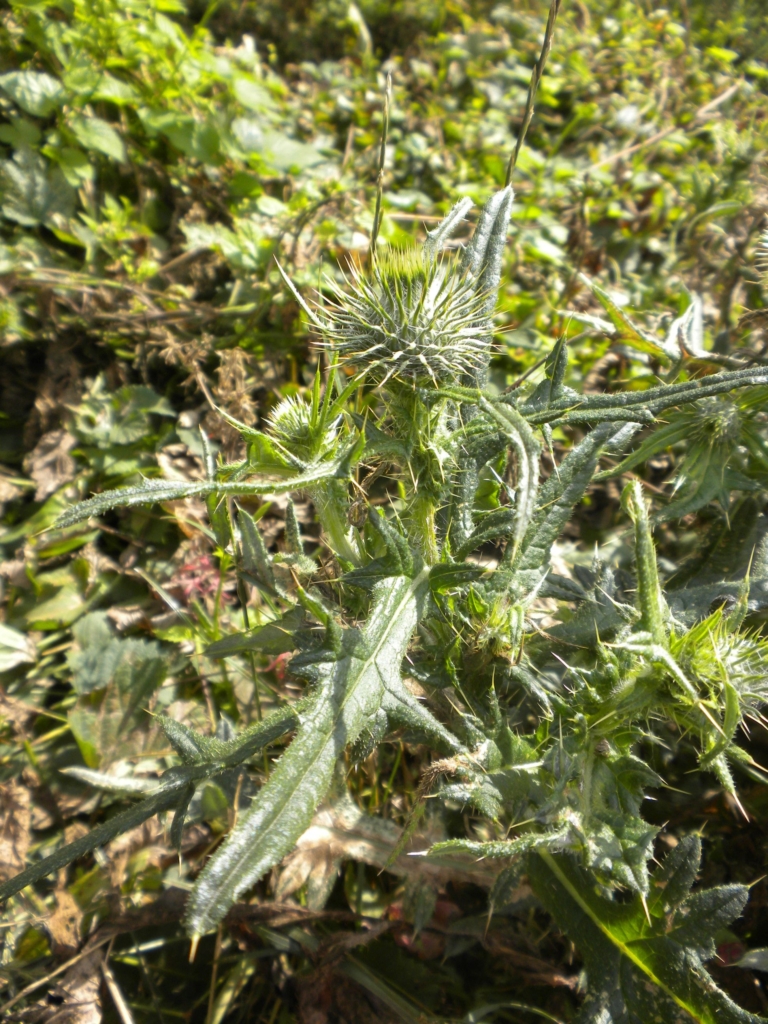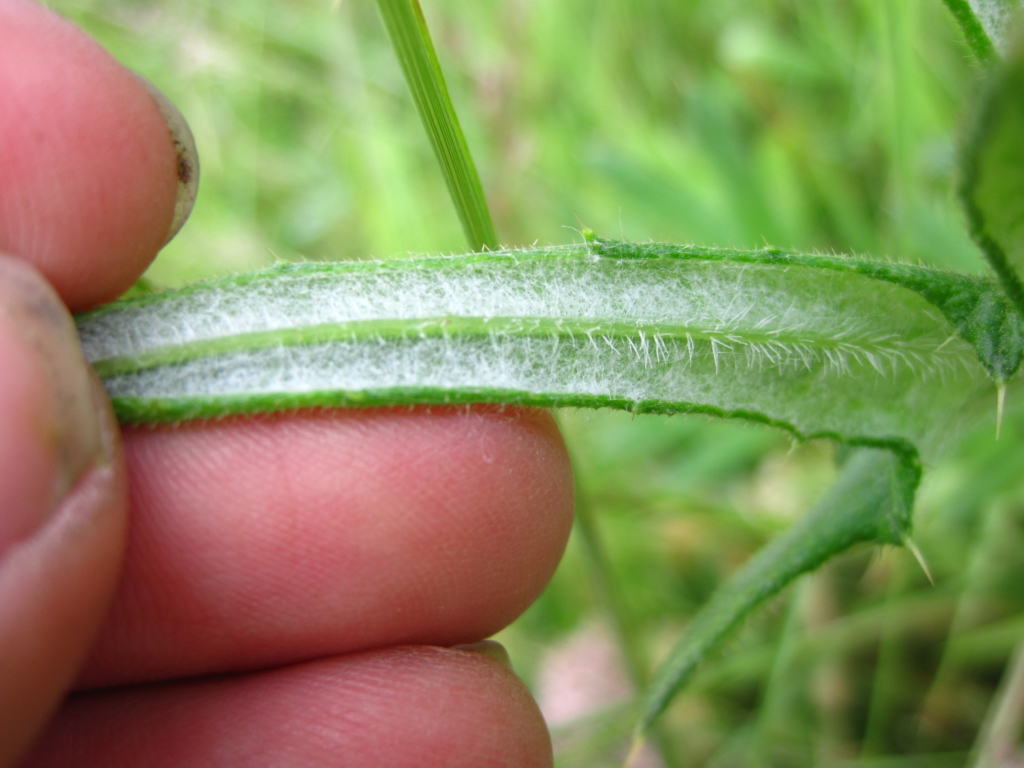Bull Thistle
Cirsium vulgare
Plant Description
A biennial thistle; stems are branching and woolly, covered in spines; leaves are lobed with prickles, and cottony hairs underneath. Flowers are pink to purple w/ spine-tipped bracts, flowering between June-September.
Plant Details
| Life Forms | |
|---|---|
| Habitats | |
| ODA Listing | |
| Soil and Moisture Conditions | |
| Suggested Actions | |
| Shade Preference | |
| Mature Height | 2-5' |
| Distribution | widespread |
| Control | Dig up at least the top couple inches of the root before the plant flowers. Cut twice per season to reduce population over time. |
| Disposal Methods | Collect and destroy flowering stems. Do not compost or leave on the ground. |
| Reproduction and Spread | Reproduces by seeds. Contaminated hay spreads new plants. Cut stems can form viable seed. |
| Introduced | introduced from Europe and Asia. |
| Look Alikes | Canada thistle, Italian thistle, native thistles |
| Impact | Colonizes disturbed sites and can form a monoculture of thistles; causes hay fever. |
| More Info |
|
© Marion Soil and Water Conservation District. All Rights Reserved.



